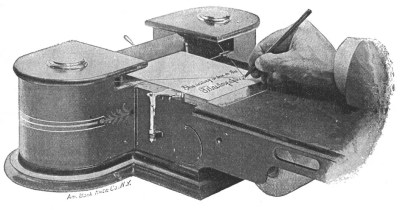Throughout the 80s and 90s, you couldn’t swing a stapler around any size office without hitting a fax machine. But what is it about the fax machine that makes it the subject of so much derision? Is it the beep-boops? The junk faxes? Or do they just seem horribly outdated in the world of cloud storage and thumb drives? Perhaps all of the above is true. While I may be Hackaday’s resident old school office worker et cetera, it may surprise you to learn that I don’t have a fax machine. In fact, the last time I had to fax something, I recall having to give my email address to some website in order to send a single fax for free.
Over across the pond, the UK government has decided to nix the requirement for fax services under something called the Universal Service Order (USO) legislation, which essentially ensures that residents all across the UK have access to phone services at a price they can afford. The UK’s Office of Communications, aka Ofcom, have announced recently that they are in agreement with the government. Since the industry is moving away from the public switched telephone network (PSTN) to IP telephony, the fax machine won’t work the same way.
Just the Fax

You may already know this, but the facsimile predates the telephone. At first, faxes traveled over wires, then over radio waves, and then over the telephone system. Now, of course, they tend to travel over the Internet to fax servers and are then distributed to individual computers.
Early fax devices were mechanical and chemical, e.g. Alexander Bain’s electric printing telegraph, which he patented in 1843. Italian physicist Giovanni Caselli invented the Pantelegraph, which gave birth to the first telefax service between Paris and Lyon, France in 1865.
In 1880, Shelford Bidwell built first machine capable of scanning any 2D original without manual plotting. Eight years later, Elisha Gray invented the telautograph, which allowed signatures to be sent over long distances. The next innovation came in 1924, when AT&T sent 15 pictures from Cleveland to New York over the telephone. That same year, RCA invented the forerunner of today’s fax machines, the wireless photoradiogram.
Fax of Life
Ofcom gave concerned citizens one month to state their case before the amendment went into effect. The few proponents who piped up pointed out the still-widespread use of fax machines in the legal, medical, and travel fields. And more importantly, this means that other voice band data applications like telecare alarms for those who need them will no longer be supported. But Ofcom assures that they expect service providers to work with customers in these situations to offer alternatives. And upon investigation into the legal, medical, travel, and energy sectors, Ofcom concluded that “the use of fax was minimal and alternatives are being sought where its use still continues,” noted Hansard, the official record of Parliamentary debates.
Interestingly enough, in 2017, the UK’s National Health Service was reported to be the world’s largest purchaser of fax machines, with close to 12,000 in operation in 2018. But the purchase of new machines was outlawed in 2019 by the Department of Health and Social Care, who said that existing ones had to be replaced with email by the end of March 2020.
So, is this really the beginning of the end for the fax machine? While we have many ways of sending photos and documents these days, until electronic signatures are widely accepted, maybe, maybe not. Just a few years ago, we saw an exploit that could remotely execute code via fax, so they still have the attention of bad actors, too.
Banner image: “Day Sixty Four – Fax Machine” by [Yortw]. Thumbnail: “Boy and Fax Machine” by Alyssa L. Miller.
"machine" - Google News
November 17, 2022 at 01:00AM
https://ift.tt/8KF7ZBG
Will The Fax Machine Ever Stop Singing? - Hackaday
"machine" - Google News
https://ift.tt/iG0nlWR
https://ift.tt/rqlP4xR
Bagikan Berita Ini














0 Response to "Will The Fax Machine Ever Stop Singing? - Hackaday"
Post a Comment